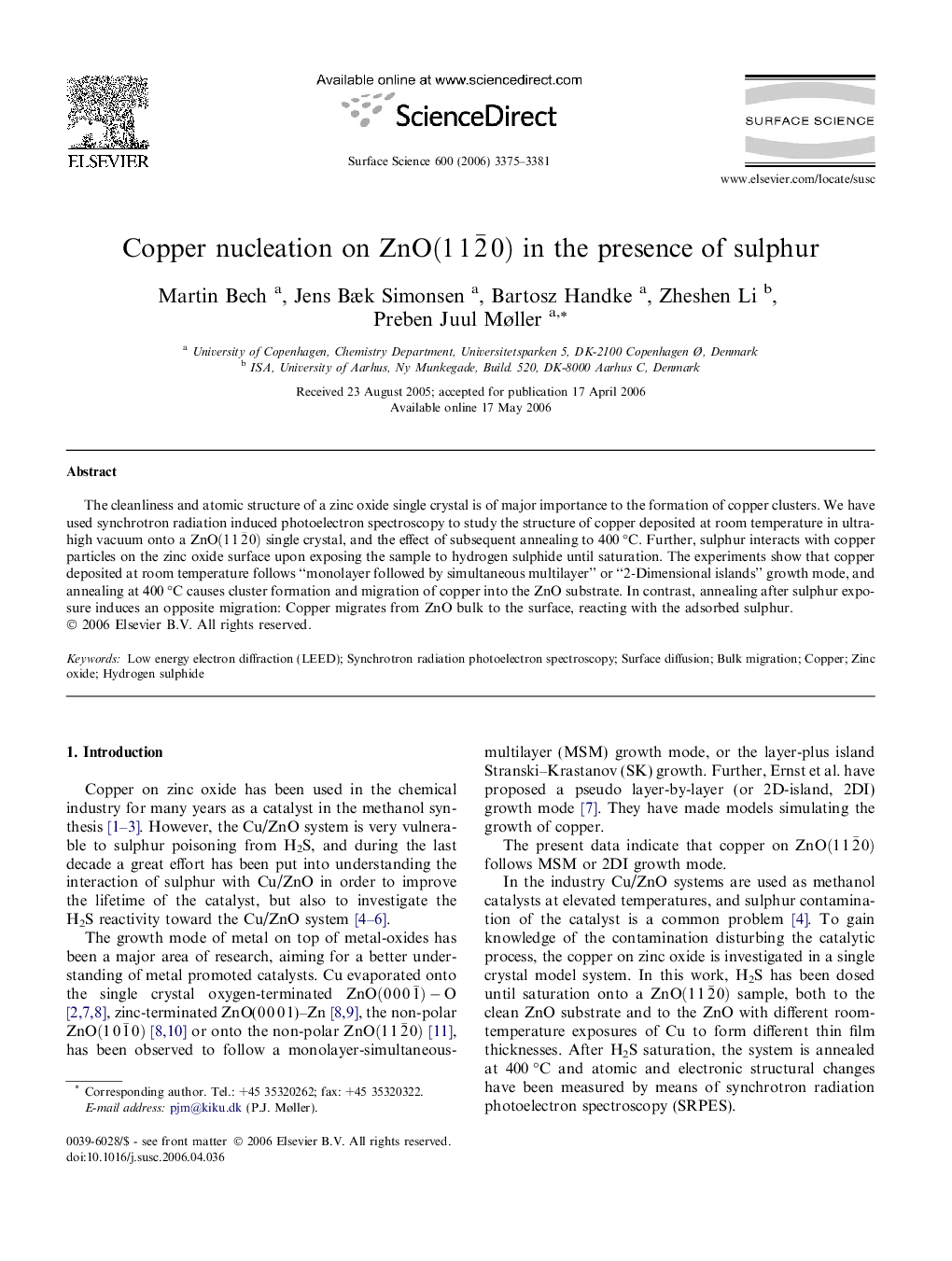| Article ID | Journal | Published Year | Pages | File Type |
|---|---|---|---|---|
| 5426587 | Surface Science | 2006 | 7 Pages |
The cleanliness and atomic structure of a zinc oxide single crystal is of major importance to the formation of copper clusters. We have used synchrotron radiation induced photoelectron spectroscopy to study the structure of copper deposited at room temperature in ultrahigh vacuum onto a ZnO(112¯0) single crystal, and the effect of subsequent annealing to 400 °C. Further, sulphur interacts with copper particles on the zinc oxide surface upon exposing the sample to hydrogen sulphide until saturation. The experiments show that copper deposited at room temperature follows “monolayer followed by simultaneous multilayer” or “2-Dimensional islands” growth mode, and annealing at 400 °C causes cluster formation and migration of copper into the ZnO substrate. In contrast, annealing after sulphur exposure induces an opposite migration: Copper migrates from ZnO bulk to the surface, reacting with the adsorbed sulphur.
